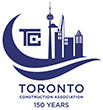The Detrimental Effects Of Poor Insulation Installation
Heat, air, and moisture flow through our homes regardless of insulation, barrier layers and the best knowledge in building sciences. What creates detrimental effects, however, is not the lack of materials, but poor installation of those materials, and few things can be more harmful to indoor comfort than poor insulation installation.
There are 3 major ways that poor insulation installation affects your home - by allowing heat flow, allowing air flow (such as drafts), and allowing moisture build up.
The Impacts of Poorly Installed Insulation from Heat Flow
The first way that poor insulation installation effects your indoor comfort is by heat flow. Heat follows a few basic rules:
- Heat flows from hot to cold
- Heat flows through conduction, convection, or radiation
- Heat flow cannot be stopped, only slowed
Insulation is the main product through which we help slow heat flow, and all products are rated using the term R-Value, a measurement that tells builders and consumers how much resistance a product can provide. Poorly installed insulation, a lack of insulation, insulation that doesn’t have a high enough R-Value, or inadequate insulation can result in any number of problems in a home, such as:
- High energy bills
- Increased maintenance on the HVAC system
- Drafts, hot or cool spots
- Mold and mildew problems
- Increased indoor humidity
Air Flow Effects Caused by Badly Installed Insulation
Good air flow is a key ingredient in our homes - not only does it help keep our homes feeling fresh, it also flushes our indoor environment to help keep us healthy and happy. Like heat, air flow in our homes follows two important principles:
- Air always flows from high pressure to low pressure
- Air follows a continuous path throughout your home
Additionally, there are a number of reasons why airflow in our homes changes throughout the year:
- Temperature differences that cause convection currents to circulate (also known as the stack effect)
- Chimneys and ventilation equipment
- Central vacuum systems and exhaust vents
- Wind and weather
Mismanagement of air within the home can result in a number of effects:
- Drafts and air leakage (resulting in high energy costs)
- Humidity and moisture problems (during the summer months this is especially relevant)
- The transfer and collection of pollutants and toxins, generated both in and out of doors
Signs and Symptoms of Improper Moisture Flow
Poor insulation installation also effects the levels of moisture in your home. Moisture in the home is present due to a number of reasons, such as:
- Bathing
- Cooking
- Humidifiers
- Outside sources (weather)
The root of most building problems is linked to excess moisture - and poor moisture management can result in:
- Attics with condensation or frost problems
- Swelling building components (like sticky doors or windows)
- Condensation on windows
- Dampness and mold growth
The Importance of Proper Insulation Installation
Poor insulation installation affects heat, air and moisture levels within your home, and can result in environmental effects in all levels of the home. It’s often difficult to pinpoint insulation as the main culprit, which is why a comprehensive inspection of your home can help you save on energy bills, increase your indoor comfort, and reduce the impacts of problems such as mold, mildew, and water damage by addressing prior poor insulation installation.



